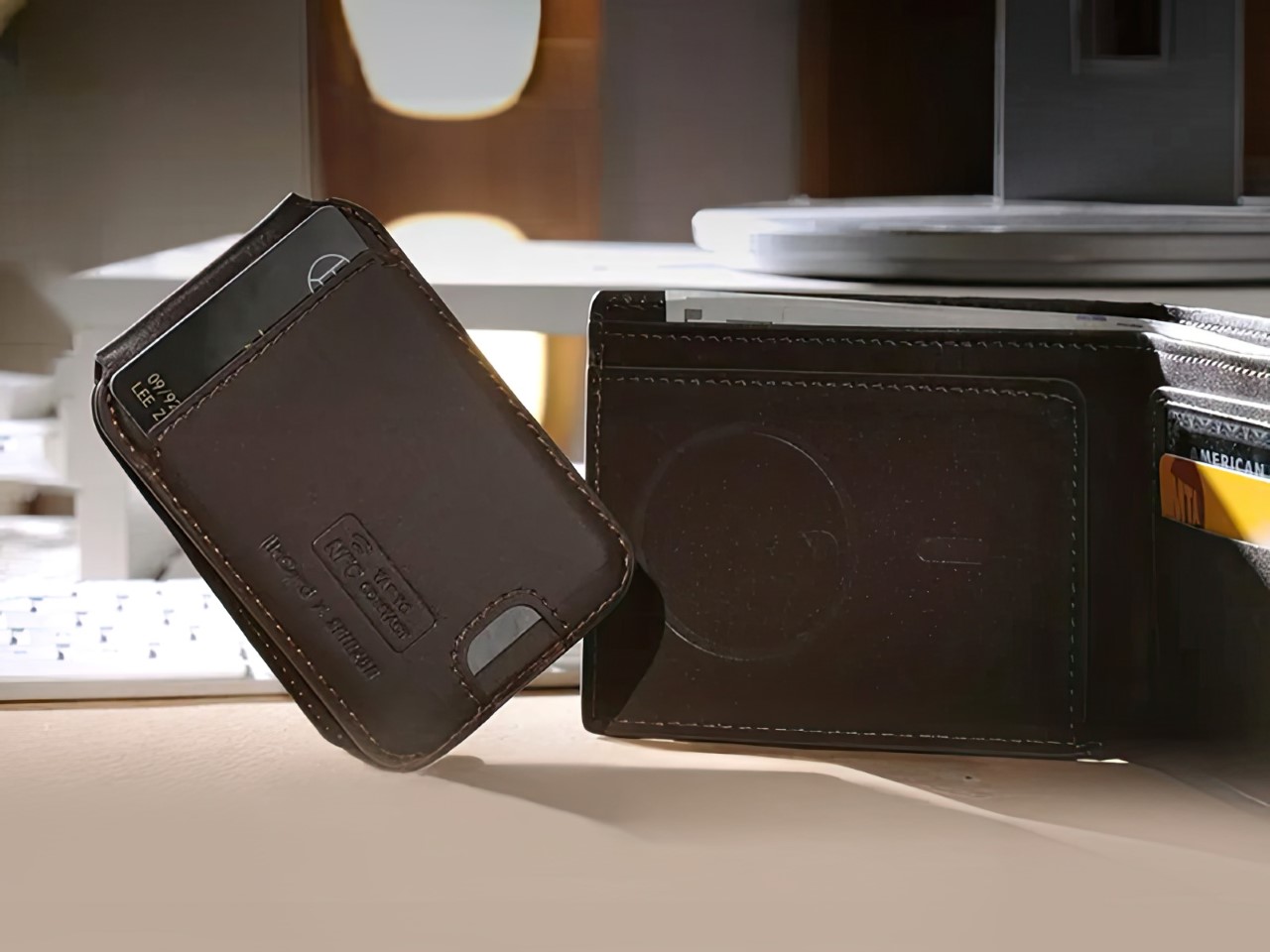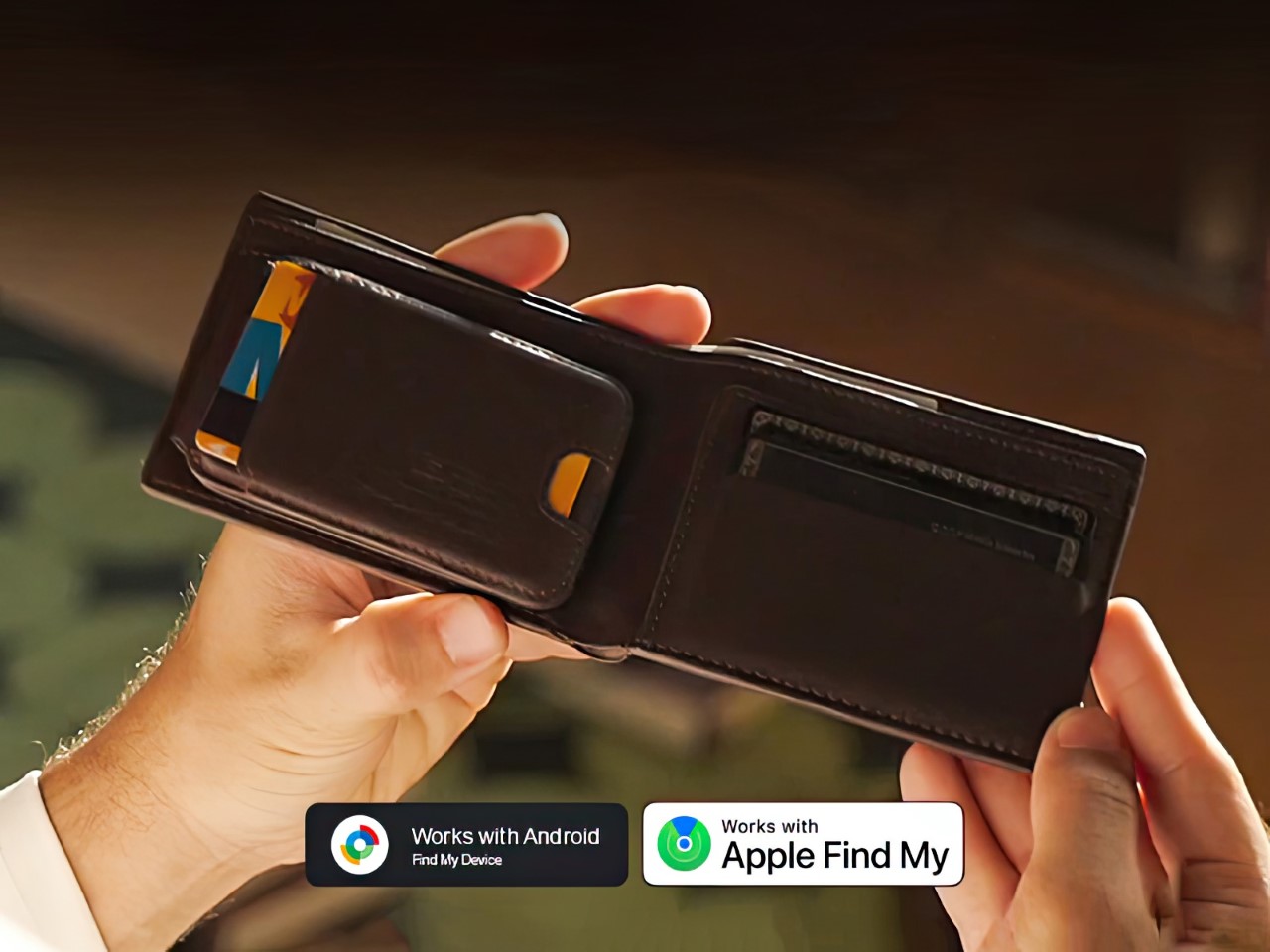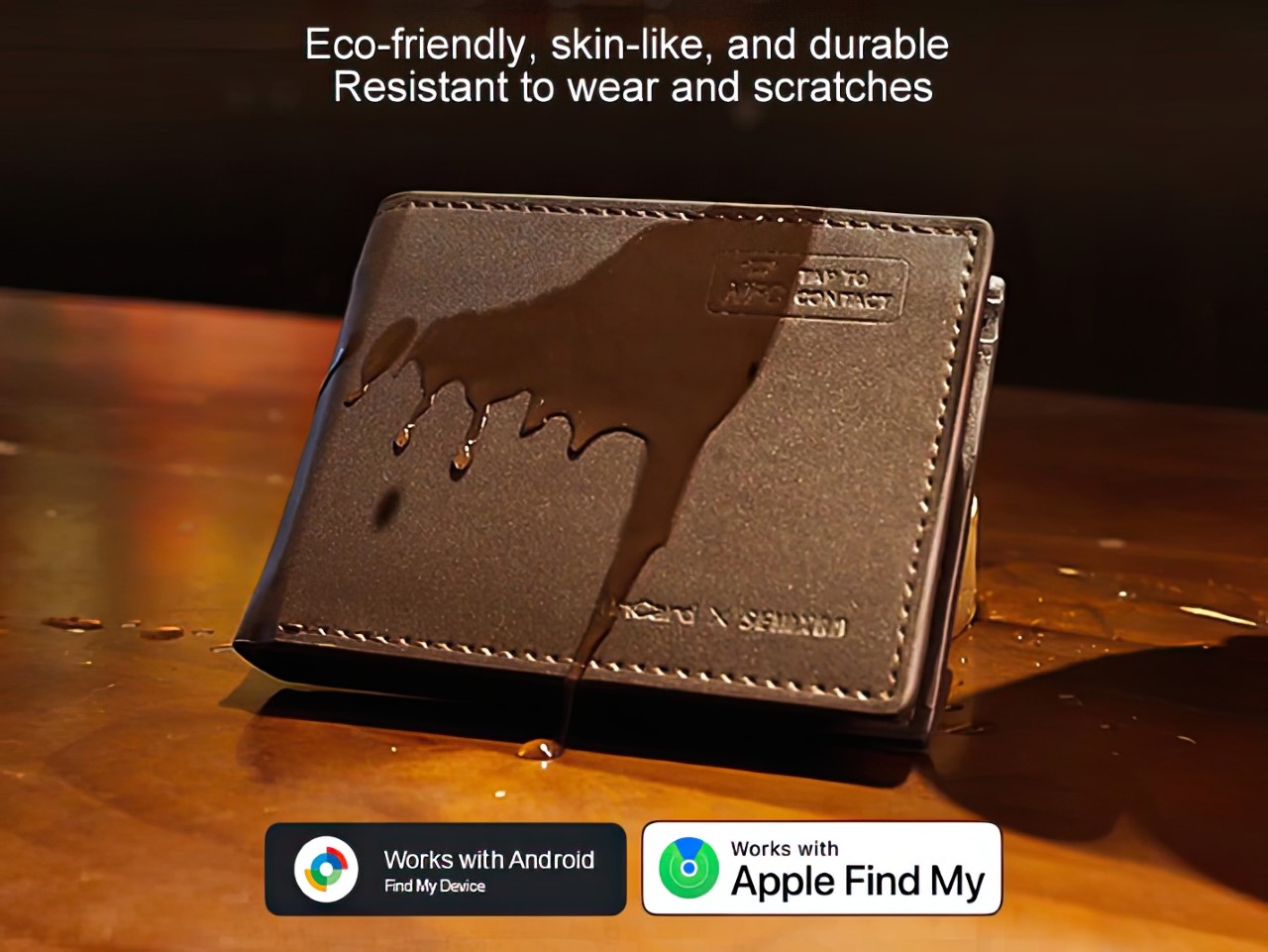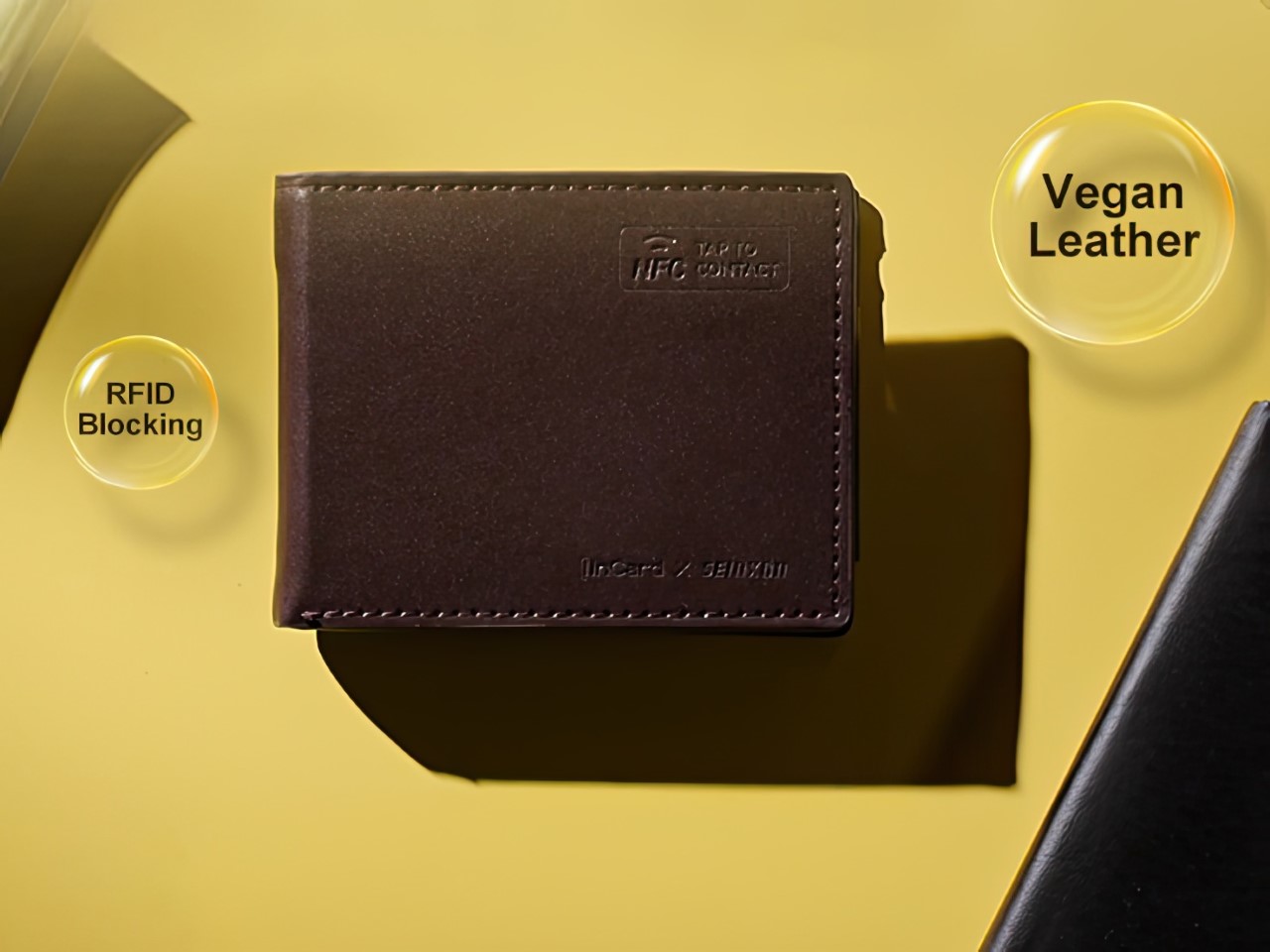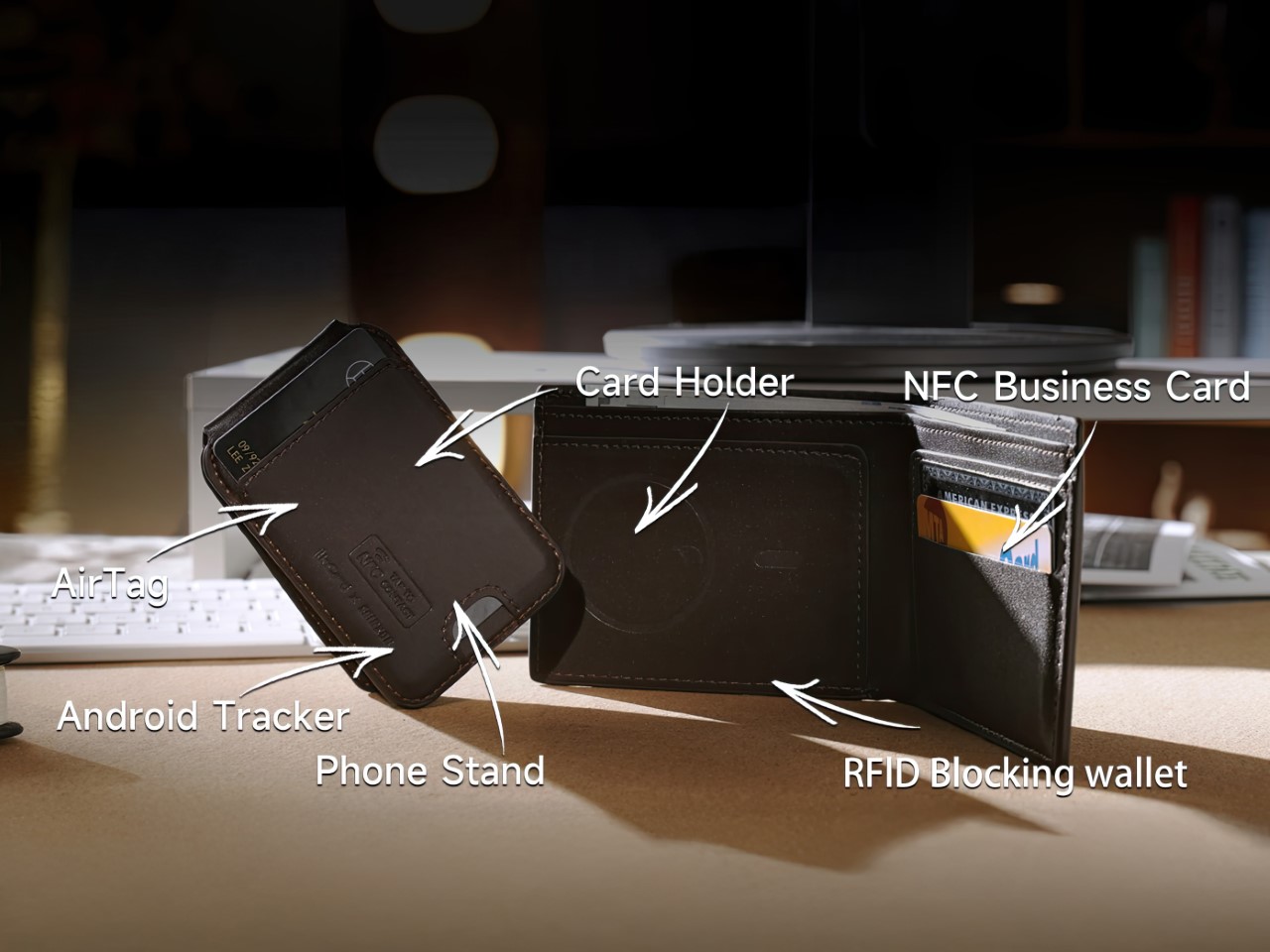As someone who just bought an Apple Watch not too long ago, I can’t begin to tell you what a heaven-sent it is to be able to ‘summon’ your phone through the watch. I’m decently organized, but I do tend to leave my phone, wallet, keys around the house sometimes, and I just wish there was a way to track or summon your wallet the way you would your phone – WITHOUT fitting a godawful AirTag inside it. Sure, there are cards that help you track your wallet too – until you switch from iOS to Android, and then suddenly you need a new tracker. By that metric, Seinxon has accomplished something genuinely clever: creating the first wallet that plays nice with both Apple Find My and Google Find My Device simultaneously. For those of us living in mixed-device households (or who might switch platforms someday), this dual-ecosystem approach solves a real problem rather than creating another walled garden.
The wallet launched at $65 for early backers (34% off the planned $99 retail), which initially seemed steep until you dig into the technical details. Most tracking wallets are essentially leather pouches with a slot for an AirTag or a Chipolo card. The Seinxon integrates both tracking systems natively, eliminating bulk while tapping into Apple’s network of nearly a billion devices and Google’s massive Android ecosystem. Honestly, this is genuinely smart engineering that acknowledges how people actually use technology across multiple platforms and devices.
Designer: Seinxon
Click Here to Buy Now: $65 $99 (34% off) Hurry! Only 14 days left. Raised over $79,000
The tracking capability alone would make this interesting, but Seinxon packed in five additional features without creating a bulky monstrosity. The detachable magnetic cardholder serves double duty as a phone stand, addressing the awkward “prop your phone against a water glass during lunch” problem we’ve all experienced. The magnetic attachment feels substantial in a satisfying, Apple-accessory kind of way – strong enough to stay put but not so powerful that it requires a wrestling match to separate components.
The wallet’s somewhat modular design means you can detach the card holder and have it hooked to your phone, while the bifold remains in your pant pocket. It’s a nice way to separate elements based on where you need them. The card holder, however, has all the tracking tech, so it’s best placed back in the wallet when you’re not using its phone-stand feature.
The built-in NFC business card functionality transforms the wallet from passive storage into an active networking tool. Tap your wallet against someone’s phone, and your contact details transfer instantly. This feature has existed in various forms for years, but integration into something you already carry eliminates the need for yet another gadget. The implementation here matters – the NFC chip remains powered even when the wallet battery runs low, ensuring your digital business card works even if tracking temporarily doesn’t.
This might be the first wallet with an IP rating, but it doesn’t hurt that the Seinxon Trackable Wallet+ is IP68 certified. This specification means the wallet can survive submersion in 1.5 meters of water for 30 minutes – plenty of protection for rain, spills, or the occasional accidental washing machine trip. Achieving this level of water resistance with multiple electronic components requires careful gasket design and material selection. The company apparently tested prototypes through 200 submersion cycles to validate the waterproofing claims. It just means the wallet’s durable against water and splashes, I don’t recommend jumping into a pool with it.
Battery life typically becomes the Achilles heel of smart accessories, especially those running multiple radios. Seinxon addressed this potential weakness by incorporating wireless charging, eliminating fiddly ports that could compromise waterproofing. The Qi-compatible charging coil works with standard charging pads, though the company recommends their own charging mat for optimal alignment. According to their testing data, a full charge powers the wallet for approximately three weeks of normal use. The battery itself is a custom 400mAh lithium polymer cell rated for 500+ charge cycles before capacity degradation becomes even slightly noticeable.
The physical design balances tech integration with wallet fundamentals. At just 14mm thin, it maintains a reasonably slim profile while accommodating up to eight cards plus cash. The exterior uses vegetable-tanned leather from an Italian tannery that meets environmental certification standards, while also boasting RFID-blocking features that prevent your cards from digital theft and unwarranted scanning. The stitching pattern cleverly conceals antenna placement while maintaining signal strength, showing attention to both aesthetics and functionality.
The interface handles both Apple and Google tracking setups through a unified process rather than forcing users through separate workflows. Location history, battery status, and NFC card customization all live within a clean interface that doesn’t require a computer science degree to navigate. The company promises three years of software updates, addressing the common concern that crowdfunded products become abandonware shortly after delivery.
The Seinxon Trackable Wallet+ represents what crowdfunding platforms do best: enabling innovative solutions that larger companies overlook because they’re too invested in their ecosystems. By bridging the Apple-Google divide while adding genuinely useful features, Seinxon has created something that solves actual problems rather than inventing new ones. The wallet starts at a rather impressive $65, which definitely undercuts most wallets, let alone paying for a wallet, a phone stand, an AirTag, and an Android tracker. The 6-in-1 Seinxon Trackable Wallet+ ships globally starting July 2025.
Click Here to Buy Now: $65 $99 (34% off) Hurry! Only 14 days left. Raised over $79,000
The post Why this Android + Apple Trackable Wallet Could Change Your EDC Game Forever first appeared on Yanko Design.
Read More . . .|
 | Tweet
| Tweet